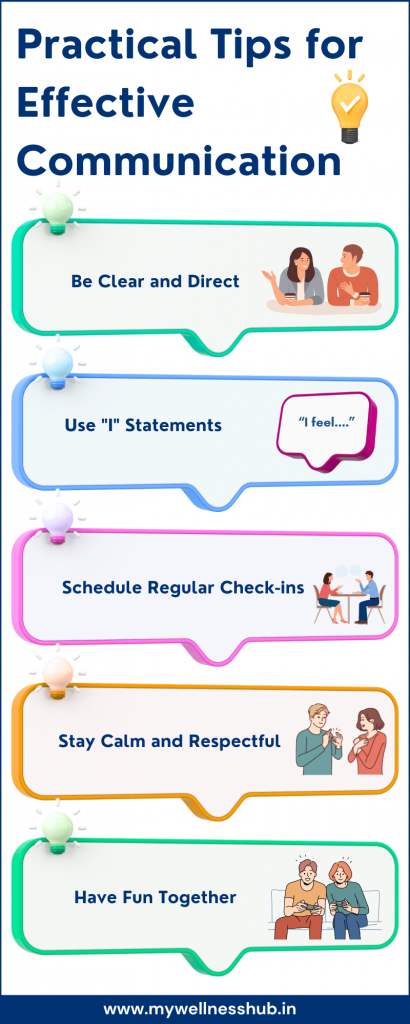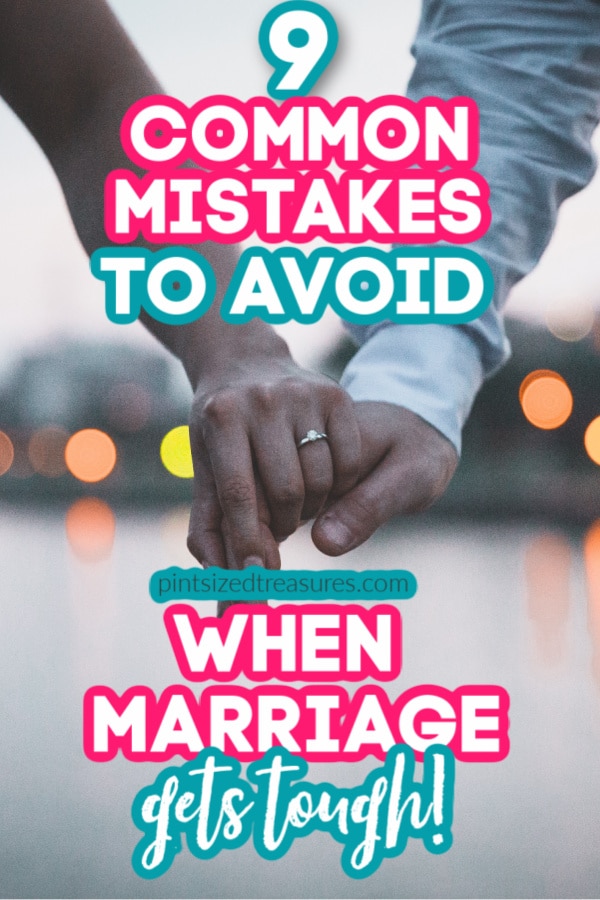

Healthy Conflict Resolution: Fighting Fair in Relationship Communication
Estimated Reading Time: 8 Minutes
"The quality of our lives depends not on whether or not we have conflicts, but on how we respond to them."
— Thomas Crum
Conflict can feel uncomfortable, and many people dread facing it in their relationships. However, navigating disagreements can lead to deeper understanding and stronger bonds if approached correctly. In this post, we’ll dive into the essential aspects of conflict resolution, including how to "fight fair," maintain clear and positive relationship communication, and turn conflicts into opportunities for personal and relational growth.
This post will cover:
- Understanding conflict in relationships
- Defining "fighting fair"
- Healthy methods for resolving conflicts
- Effective communication techniques
- The role of emotions in conflict resolution
- A step-by-step guide to resolving conflicts
1. Understanding Conflict in Relationships
Conflict Is Normal
Conflict is an inevitable part of any relationship. It arises from differing needs, perspectives, and experiences, and it’s essential to recognize that disagreements are a normal occurrence. Rather than signaling failure, conflicts can serve as opportunities for growth and deeper understanding. This is particularly relevant in the realm of relationship communication.
Opportunity for Growth
By addressing challenges directly, couples can strengthen their bonds. When partners confront disagreements, they can explore differing opinions and feelings, allowing them to grow together instead of apart. Disagreements can illuminate areas for improvement and push individuals to understand one another better (HelpGuide).
Role of Healthy Communication
Healthy communication is crucial during conflicts. Openly expressing thoughts and feelings enables both partners to articulate their viewpoints and work toward a resolution that satisfies both parties. Engaging in respectful and constructive dialogue can alleviate tension and foster harmony (North Central College). For more on enhancing your relationship communication, check out our Essential Talks Before Marriage.
2. What Does "Fighting Fair" Mean?
Definition of "Fighting Fair"
So, what does "fighting fair" mean? In essence, it involves maintaining respect and empathy during disagreements. Couples should focus on the issue at hand without resorting to negative tactics, such as name-calling or stonewalling. Engaging in respectful exchanges is crucial to achieving a positive outcome (Love Is Respect).
Common Pitfalls to Avoid
When conflicts arise, it’s easy to fall into unhealthy patterns of communication. Here are some negative behaviors to steer clear of:
- Personal attacks or insults: Instead of criticizing your partner as a person, focus on the behavior causing the conflict.
- Stonewalling: This involves withdrawing from a conversation and refusing to engage, leaving feelings unaddressed.
- Ignoring your partner’s feelings: It’s essential to acknowledge how your partner feels—it validates their perspective and opens the door for resolution (National University).
Principles of Fighting Fair
Fighting fair means upholding key principles during conflicts. These include:
- Honesty and directness: Be clear about your feelings and perspectives.
- Protecting each other’s dignity: Approach disagreements with respect, ensuring that both partners feel valued.
- Prioritizing the relationship: Focus on finding resolutions that preserve the bond between partners rather than simply winning the argument.
3. Healthy Ways to Resolve Conflicts
3.1 Active Listening
Importance of Active Listening
One of the most crucial skills in conflict resolution is the ability to listen actively. This means truly hearing your partner’s perspective and giving them the space to express their thoughts and feelings without interruption.
Techniques for Active Listening
To effectively practice active listening, consider these techniques:
- Focus intently on what your partner is saying.
- Summarize their statements to confirm your understanding.
- Paraphrase their feelings to show comprehension (North Central College).
Benefits
When partners feel heard and valued, dialogue becomes more productive and constructive. Active listening sets the foundation for resolving conflicts effectively.
3.2 Stay Focused on the Issue
Avoid Bringing Up the Past
During a disagreement, it’s essential to remain focused on the present issue rather than dredging up past grievances or unrelated problems. When teams stay on topic, they can address the conflict at hand without derailing into old disputes (National University).
Techniques
- Concentrate your discussions on the specific issue at hand.
- Agree to save discussions about unrelated concerns for another time.
3.3 Use "I" Statements
Express Feelings Without Blame
Using "I" statements is a powerful conflict-resolution tool. This technique allows individuals to express their feelings without placing blame and making accusations.
Examples
Instead of saying, “You always change our plans,” one might say, “I feel disappointed when our plans change unexpectedly.” This statement communicates feelings without creating defensiveness in the other partner.
Benefits
"I" statements foster open communication by decreasing defensiveness and encouraging a more productive dialogue (North Central College). For more strategies on effective communication, explore our Essential Premarital Discussion Topics.
3.4 Finding Common Ground
Importance of Compromise
Finding common ground is vital in conflict resolution. By seeking compromise and collaboration, partners can work together to find solutions that satisfy both of their needs (Love Is Respect).
Strategies
- Identify shared values or goals during the discussion.
- Work collaboratively to discover mutually satisfying solutions.
Benefits
Focusing on common ground allows partners to move from opposition to alignment, strengthening their relationship.
4. Effective Communication Techniques
Timing Discussions
Choose a suitable time to talk when both partners are calm and receptive. Avoid discussing serious issues when emotions are running high.
Using Humor
While humor can be a great way to diffuse tension, be cautious that it doesn’t minimize the seriousness of the conflict. Use humor appropriately to keep the atmosphere relaxed.
Establishing Boundaries
Creating rules for respectful dialogue is essential. Some guidelines could include:
- No interrupting during discussions.
- No name-calling or insults.
- Taking breaks if emotions escalate (Love Is Respect).
Non-Verbal Communication
Take note of body language and facial expressions during discussions. Making eye contact and maintaining an open posture can signal that you are engaged and invested in the conversation. For additional tips on communication, visit our Benefits of Premarital Counseling.
5. The Role of Emotions in Conflict Resolution
Acknowledging Emotions
Recognizing and validating both your emotions and your partner’s emotions is key to productive conflict resolution.
Managing Intense Emotions
When emotions run high, practice strategies such as deep breathing, mindfulness, or taking a brief pause before continuing with the conversation.
Practicing Empathy
Strive to understand your partner’s perspective. Viewing the situation through their lens can create compassion and diminish misunderstandings.
Remaining Self-Aware
Become mindful of your emotional triggers. Knowing what might set you off can help you respond more calmly during conflicts (North Central College). To deepen your emotional understanding, consider reading our Building Emotional Intimacy.
6. Putting It All Together: A Step-by-Step Guide
Now that we've discussed various techniques, let’s outline a step-by-step guide to resolving conflicts:
Step 1: Set Aside Time to Discuss
Find a private, quiet space without distractions to focus on the issue.
Step 2: Agree on Conversation Boundaries
Outline rules for the conversation, such as no interrupting or personal attacks (fighting fair).
Step 3: Share Perspectives Using "I" Statements
Each partner should express their feelings and use active listening to understand each other.
Step 4: Identify Underlying Needs and Common Ground
Discuss what each person needs from the other and uncover shared goals.
Step 5: Brainstorm Solutions
Work together to find mutually acceptable solutions.
Step 6: Negotiate a Compromise
Be willing to make concessions for the benefit of the relationship.
Step 7: Agree on a Plan and Follow Up
Summarize your agreement and set a follow-up time to discuss how well it is working.
Practical Example Scenario
Situation: Imagine one partner feels ignored when the other spends evenings on their phone. Instead of saying, “You never pay attention to me,” they could say, “I feel lonely when we don’t talk in the evenings.”
- One partner expresses their feelings using an "I" statement.
- The other partner listens actively and paraphrases their feelings.
- Together, they identify that both value quality time.
- They agree to set aside phone-free time each night, fostering a healthier connection.
7. Conclusion
In summary, conflict resolution and fighting fair are crucial components in maintaining trust and intimacy within relationships. By practicing active listening, using "I" statements, staying focused on the issue, and managing emotions, couples can transform disagreements into opportunities for growth (HelpGuide and North Central College).
We encourage you to apply these strategies in your own relationships and reflect on the positive changes they may bring.
What challenges have you faced in terms of conflict resolution? Share your experiences and thoughts in the comments below—we’d love to hear from you!
8. Call to Action
If you found this post helpful, be sure to check out related articles discussing:
- Effective relationship communication
- Building emotional intelligence
- Strategies for healthy communication
Don’t hesitate to share this post with friends or loved ones who might benefit. And remember to subscribe for more insights on improving your relationships!
Conflict Resolution Relationships Communication Emotional Intelligence Personal Growth
-

-
 Elevate Your Haldi and Mehandi Ceremony Glam
Elevate Your Haldi and Mehandi Ceremony GlamNeeraj Singh
-

-
 What to include in my Wedding Website
What to include in my Wedding WebsiteDream Wedds
-
 How Engagement Party should be celebrated
How Engagement Party should be celebratedLeonard Bernstein
-

-

-

-

-

-

-

-
 Health and Wellness for Brides and Grooms
Health and Wellness for Brides and GroomsDreamWedds
-

-

-

-

-
-
-

-

-

-
-

-

-

-

-

-
 Personal Space: The Key to a Healthy and Balanced Marriage
Personal Space: The Key to a Healthy and Balanced MarriageDreamWedds Team
-

-

-

-

-

-
 Makeup Basics: Essential Cosmetics Every Beginner Should Own
Makeup Basics: Essential Cosmetics Every Beginner Should OwnDreamWedds Team
-

-
 Fade Dark Spots: Natural Remedies and Tips for Clearer Skin
Fade Dark Spots: Natural Remedies and Tips for Clearer SkinDreamWedds Team
-

-
-

-
-

-

-
-
 The Ultimate Guide to Achieving Long-Lasting Bridal Makeup
The Ultimate Guide to Achieving Long-Lasting Bridal MakeupDreamWedds Team
-

-

-
 Selecting the Perfect Foundation Shade: Your Ultimate Guide
Selecting the Perfect Foundation Shade: Your Ultimate GuideDreamWedds Team
-

-

-

-
 Effective Natural Skincare Remedies to Reduce Pore Size
Effective Natural Skincare Remedies to Reduce Pore SizeDreamWedds Team
-

-

-

-
 The Importance of a Bridal Makeup Trial for Your Wedding Day
The Importance of a Bridal Makeup Trial for Your Wedding DayDreamWedds Team
-

-
:max_bytes(150000):strip_icc()/Kitzcornermedium-c9abd848ea634040a06bb6db8b8a7304.jpg)
-

-

-

-

-

-

-
 The Ultimate Wedding Planning Checklist for Indian Weddings
The Ultimate Wedding Planning Checklist for Indian WeddingsSimranpreet Singh
-

-

-

-
 A Guide to Health, Wellness post Marriage
A Guide to Health, Wellness post MarriageSaujanya Bose
-

-

-
 Virat & Anushka: A Fairytale Wedding to Remember!
Virat & Anushka: A Fairytale Wedding to Remember!Yashashvi Mathur
-
 YOUR BIO AND HOW WE MET
YOUR BIO AND HOW WE METLeonard Bernstein
-







